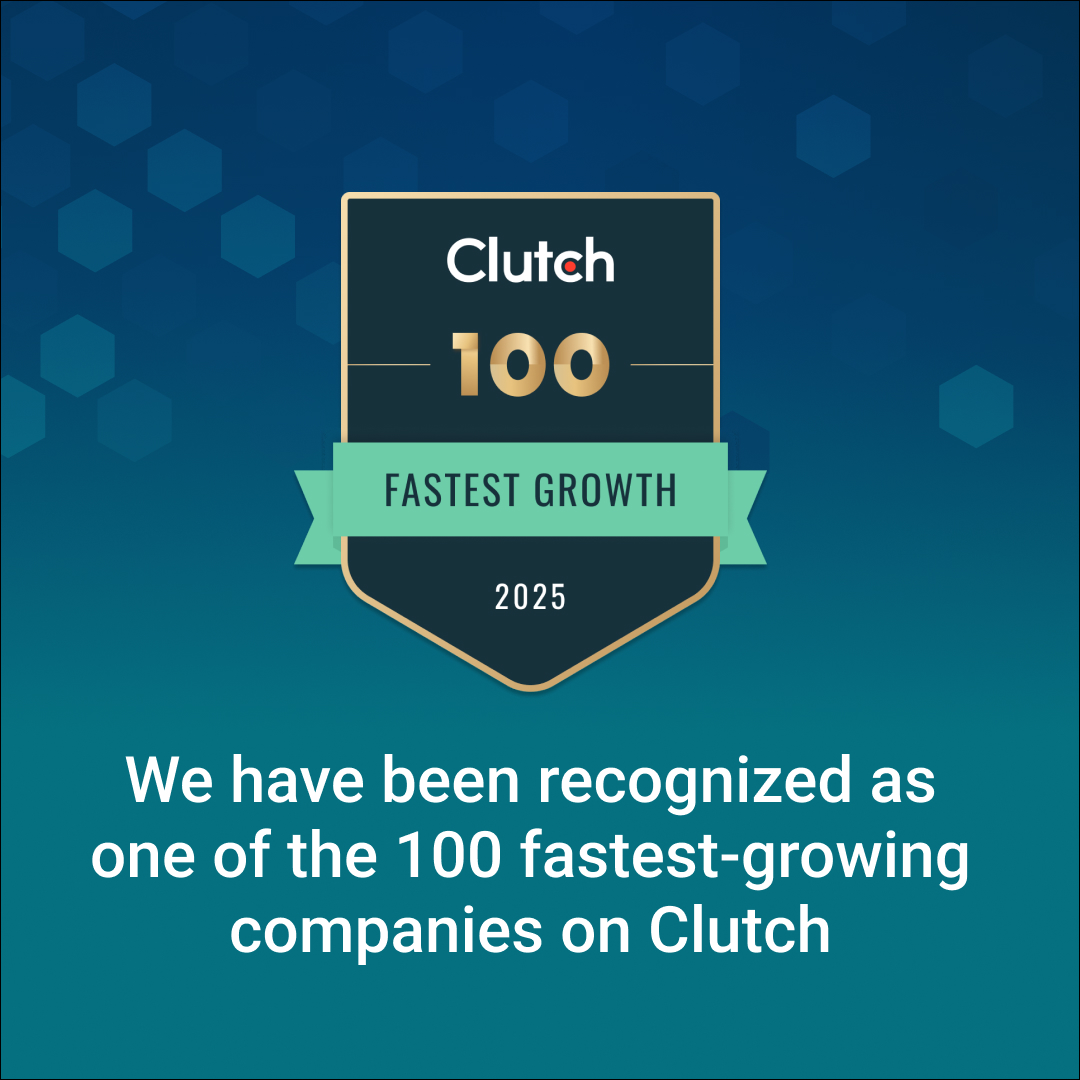Introduction
Businesses face growing pressure to innovate quickly, cut costs, and meet evolving customer demands. Artificial Intelligence (AI) is transforming product development by accelerating design, testing, and engineering workflows. This guide explores the top AI use cases in product development, highlighting their benefits, challenges, and real-world applications.
What is AI and Why Does It Matter in Product Development?
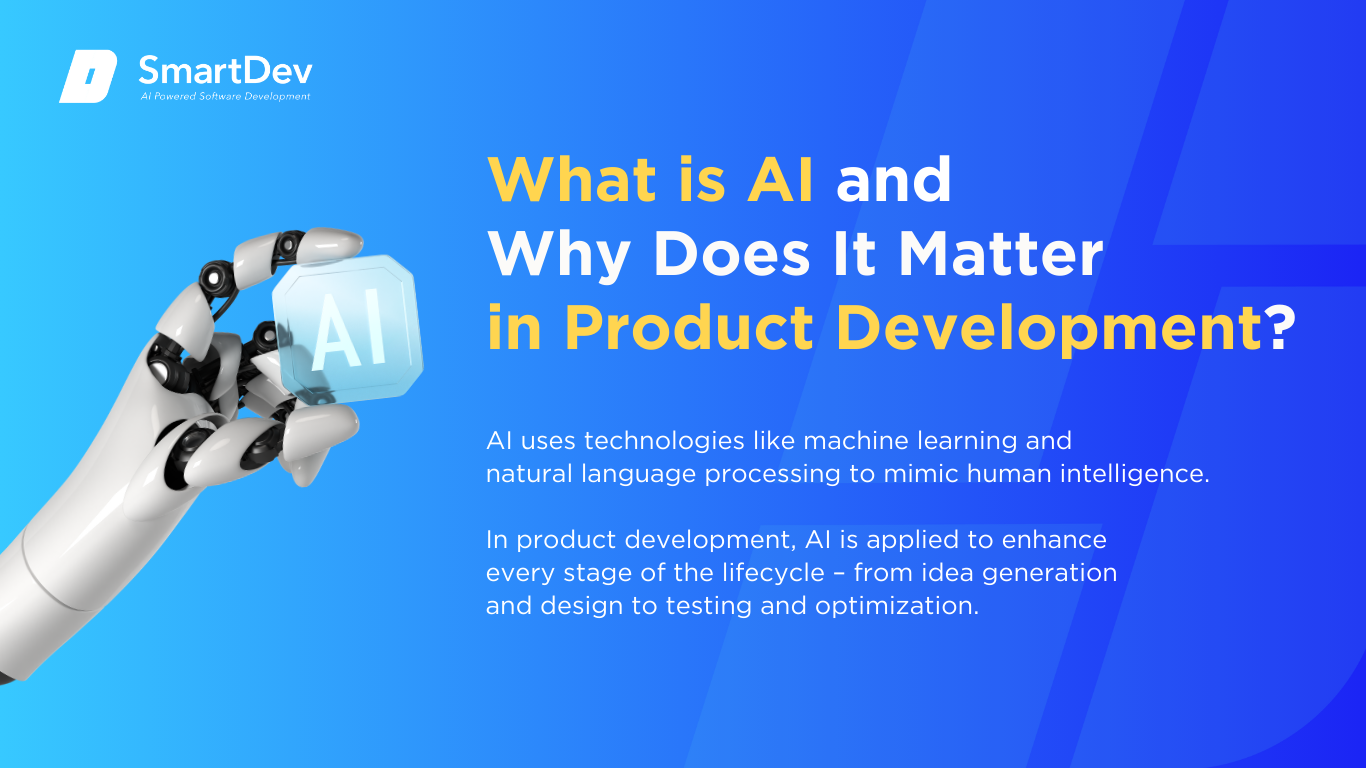
Definition of AI and Its Core Technologies
Artificial Intelligence refers to the development of computer systems capable of performing tasks that typically require human intelligence. These tasks include learning from data, recognizing patterns, making decisions, and generating content. Core technologies behind AI include machine learning, natural language processing, and computer vision, which enable systems to adapt and improve over time.
In product development, AI is applied to enhance every stage of the lifecycle – from idea generation and design to testing and optimization. It helps teams analyze data, automate complex processes, and simulate outcomes with high accuracy. This integration enables faster decision-making, reduces manual effort, and supports more innovative, user-centric product solutions.
The Growing Role of AI in Transforming Product Development
AI is playing a growing role in the early stages of product development by accelerating idea generation and design exploration. Teams are using generative models to quickly create visual concepts, design variations, and even marketing copy. This rapid output allows decision-makers to evaluate a broader range of possibilities and move faster from concept to prototype.
In industries such as cosmetics and materials science, AI is streamlining formulation and testing by predicting how ingredients will interact. Developers can now simulate chemical reactions or performance outcomes using historical data and trained models. This reduces the need for repeated physical trials and speeds up the path to final product approval.
Manufacturing teams are also using AI to improve operational efficiency during development. Predictive tools help identify potential production bottlenecks, optimize resource planning, and suggest design improvements before mass production. These capabilities support faster market readiness and reduce the risk of costly rework.
Key Statistics and Trends Highlighting AI Adoption in Product Development
AI adoption in product development is accelerating. As of 2024, 23% of firms report using AI in new product development, up from 13% in early 2023. This 10-point increase reflects growing reliance on AI to streamline design and innovation processes.
Globally, 85% of organizations have integrated AI agents into at least one workflow, often to support tasks like prototyping, testing, or design iteration. These tools are becoming central to daily operations rather than experimental technologies.
In manufacturing, 24% of companies apply AI to product development and engineering, more than in logistics or procurement. This highlights product design as a leading area for AI-driven transformation.
Business Benefits of AI in Product Development
AI is driving measurable value across the product development lifecycle, from concept to launch. By addressing bottlenecks, enhancing decision-making, and improving speed and accuracy, AI helps teams build better products faster.
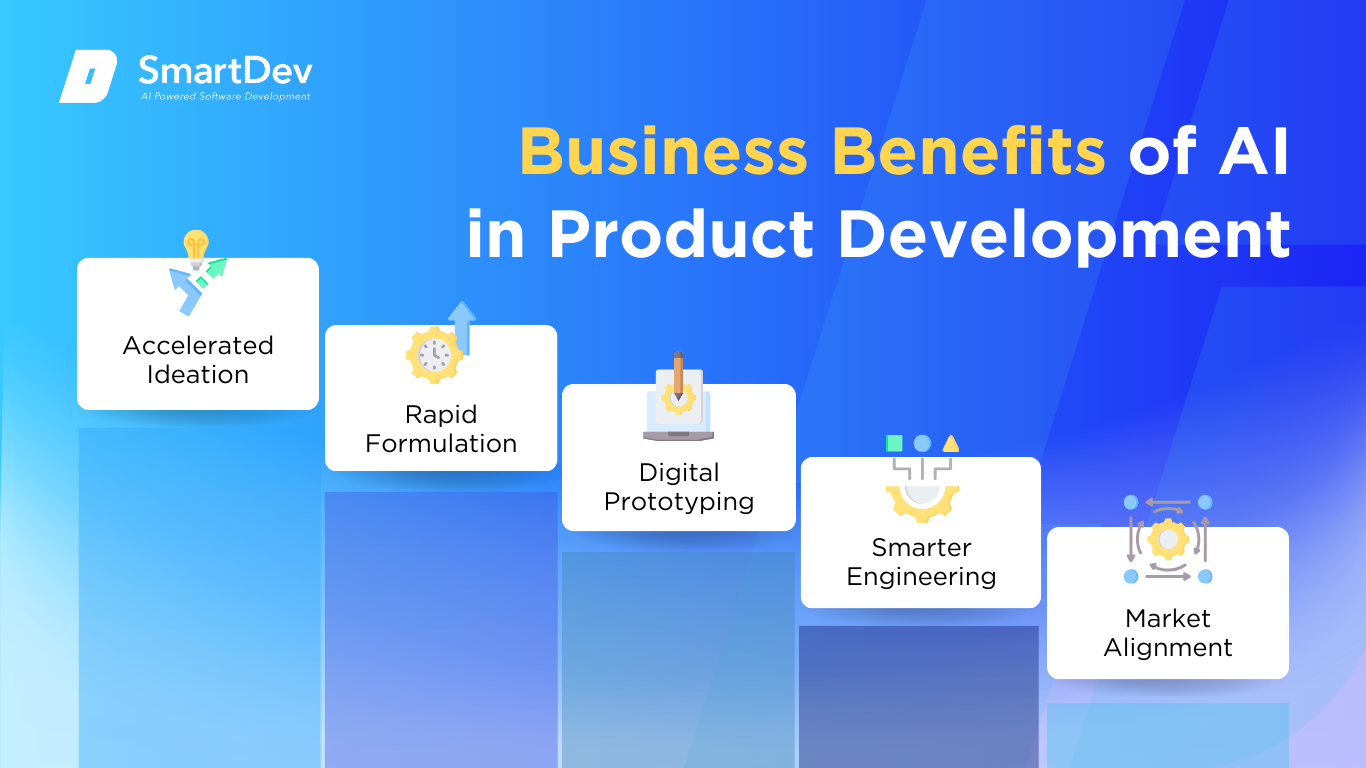
1. Accelerated Ideation
AI tools generate a wide range of product concepts quickly by analyzing existing designs, user trends, and market data. This speeds up early brainstorming and reduces creative bottlenecks. Teams can explore more possibilities without investing heavily in time or resources.
Generative models like DALL·E or ChatGPT assist designers and marketers in drafting visuals, product descriptions, and customer personas. These tools enhance collaboration between departments by making ideas easier to visualize and iterate. As a result, products are aligned faster with both brand identity and customer expectations.
2. Rapid Formulation
In industries like cosmetics or pharmaceuticals, AI models simulate how ingredients or compounds will interact. This eliminates the need for excessive lab testing and accelerates safe, effective formulation. The process moves from months to minutes in some cases, significantly cutting R&D time.
AI systems trained on chemical, molecular, or materials data can suggest optimal combinations based on target features. Companies like Albert Invent use such platforms to stay ahead of trends and deliver products faster. This capability helps teams reduce costs while increasing the likelihood of successful product outcomes.
To see how AI accelerates product innovation in consumer goods, including formulation and trend analytics, explore our insights on AI use cases in consumer goods.
3. Digital Prototyping
AI enables detailed digital prototyping, allowing teams to simulate performance and identify flaws before physical models are built. This reduces the need for multiple costly prototypes. As a result, product iterations are faster and more efficient.
These simulations also allow companies to test under a wide range of conditions, improving durability and compliance. For example, AI can simulate stress, heat, or fatigue in automotive or hardware components. This ensures products meet standards while minimizing time in physical labs.
To learn how AI simulations can transform physical testing workflows and cut development cycles, check out our smart consulting case study focused on workflow and inventory optimization.
4. Smarter Engineering
AI automates technical tasks such as code generation, bug detection, and design optimization in engineering workflows. This frees developers and engineers to focus on creative problem-solving and strategic planning. Tools like GitHub Copilot exemplify how AI can enhance technical productivity.
In chip and hardware design, AI helps automate layout planning, functional testing, and performance tuning. These efficiencies shorten development cycles and reduce human error. The result is higher-quality products delivered in less time with fewer resources.
5. Market Alignment
AI analyzes customer feedback, reviews, and social signals to extract actionable insights for product refinement. This ensures development is aligned with real user needs. Teams can adapt features or positioning based on validated demand patterns.
Tools also support personalization by tracking preferences and predicting which product variants will perform best. This enables more precise targeting in both design and marketing stages. Ultimately, products launch with stronger market fit and higher chances of adoption.
Challenges Facing AI Adoption in Product Development
Despite its potential, AI implementation comes with real operational and strategic hurdles. Businesses must navigate issues like data quality, cost, and organizational alignment to fully realize AI’s benefits.
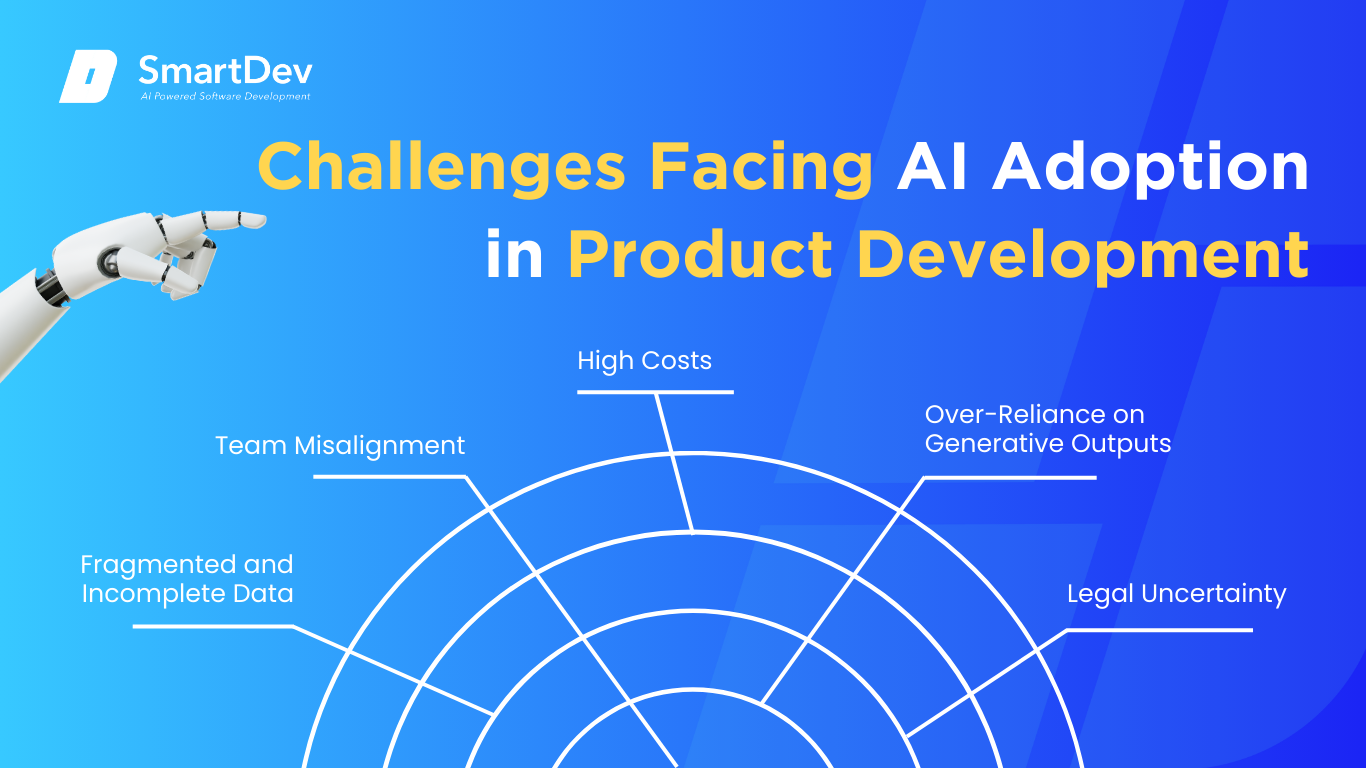
1. Fragmented and Incomplete Data
AI systems rely on clean, centralized data from product design, customer feedback, testing, and market analysis. In many organizations, this data is scattered across platforms or poorly labeled, limiting the effectiveness of AI models. Without integration, teams struggle to extract insights or automate tasks reliably.
Building a usable data infrastructure requires more than new tools, it demands cross-functional coordination and governance. Teams must align on taxonomy, formatting, and update practices to avoid inconsistent inputs. This becomes especially challenging in global or multi-product organizations with legacy systems.
To learn how unstructured data can be effectively leveraged in AI applications, check out our detailed guide on how AI unlocks the power of unstructured data.
2. Team Misalignment
AI adoption often falters when development, marketing, and engineering teams use different systems or lack shared goals. Tools may be introduced without clear workflows or integration points, creating friction rather than efficiency. Misalignment reduces the return on AI investments and leads to fragmented processes.
To succeed, AI must be embedded into daily tasks, not operate in a vacuum. This requires cross-department training and user buy-in from the start. Without this alignment, even powerful tools become underutilized or misapplied.
3. High Costs
AI tools, particularly for simulation or generative design, require significant computational resources. Running these models involves high costs in infrastructure, cloud services, or specialized hardware like GPUs. For many mid-sized companies, these barriers can delay or limit adoption.
Beyond initial setup, maintaining AI systems means ongoing tuning, retraining, and data management. These recurring costs demand dedicated teams and sustained investment. Without long-term planning, early momentum can stall due to budget constraints.
4. Over-Reliance on Generative Outputs
Generative AI can accelerate creativity, but unfiltered outputs may include unrealistic or unfeasible concepts. Teams that rely too heavily on AI suggestions without human validation risk wasting time or introducing flawed ideas. AI should augment – not replace – expert judgment.
There’s also a risk of homogeneity if everyone uses similar models trained on the same datasets. Products may start to converge in style or features, reducing differentiation. To stay competitive, businesses must pair AI with original insight and critical review.
5. Legal Uncertainty
The legal status of AI-generated designs, text, or formulas remains uncertain in many regions. Questions around ownership, licensing, and liability can slow adoption in industries like design, gaming, or biotech. This adds risk, especially when launching in regulated markets.
Additionally, regulations around AI transparency, data usage, and compliance are evolving rapidly. Businesses must monitor policy changes and adapt their processes accordingly. Without legal clarity, teams may hesitate to fully deploy AI in core workflows.
Specific Applications of AI in Product Development
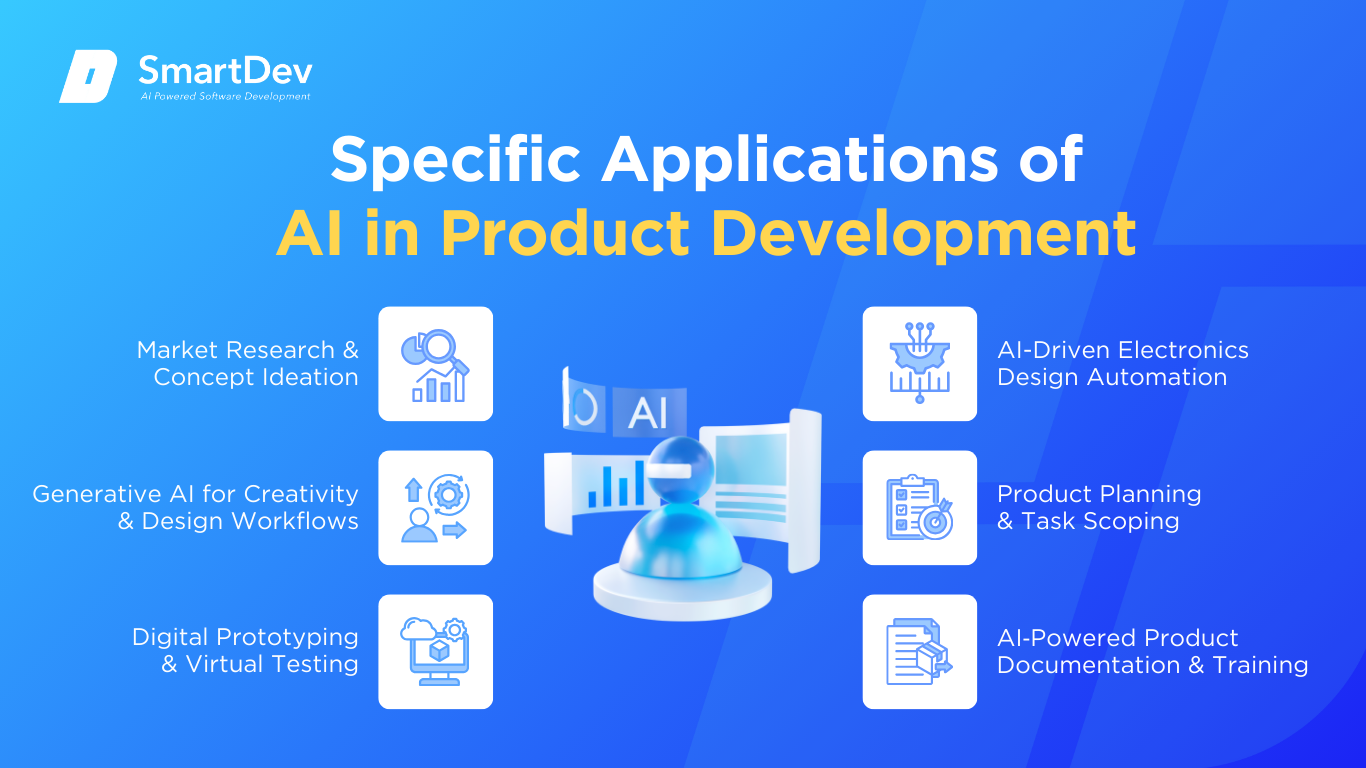
1. AI‑Powered Market Research & Concept Ideation
AI-driven ideation systems apply machine learning and NLP to vast consumer datasets, like social media commentary, product reviews, and trend reports, to surface nuanced insights and emerging preferences. They translate this intelligence into actionable signals, guiding product teams toward data-informed concepts that align more closely with market demand. As a result, innovation cycles accelerate and risk of misaligned launches diminishes, though teams must safeguard against bias and ensure diverse data representation.
These platforms typically integrate into early-stage roadmapping workflows, feeding analysts and designers with trend alerts, sentiment analysis, and concept clusters. They help organizations balance novelty with brand identity and deliver ideation outputs that are both creative and grounded in real consumer needs. Operational efficiency improves through fewer blind trials and more targeted testing, provided oversight ensures interpretability and brand alignment.
Ethically, it’s essential to maintain human stewardship to prevent models from reinforcing stereotypes or cultural blind spots. On scalability, the challenge lies in tuning models across product categories and geographies without compromising insight quality. Cross-functional validation – marketing, R&D, and brand stewards – is crucial to preserve coherence.
Real‑world example:
Mondelez International uses an AI tool developed with Fourkind to speed up snack recipe development by 4–5x, creating over 70 new products, including the Gluten-Free Oreo. This approach helped drive a 5.4% increase in organic sales. Human tasters still validate final outputs.
2. Generative AI for Creativity & Design Workflows
Generative AI unlocks creative breadth by producing novel design alternatives – be it form factors, structures, or aesthetic layouts – that might not emerge through traditional brainstorming. These models are trained on extensive design repositories, including CAD frameworks, simulation outcomes, and historical blueprints. Their outputs often spark innovation, inspiring design teams to explore unconventional yet viable concepts quickly.
By feeding generated options into CAD tools, teams can iterate faster and assess feasibility earlier in the process. This capability streamlines the exploration phase and expands the designer’s creative palette while preserving technical alignment. Ensuring these AI-generated ideas meet performance, safety, and branding standards remains essential for adoption.
From a technical standpoint, challenges include bridging creative novelty with manufacturability and regulatory compliance, especially in regulated industries. Scaling these systems across diverse product domains requires strong integration with design toolchains and clear audit trails. Human oversight stays critical to validate AI-generated designs and ensure they meet practical requirements.
Real‑world example:
Neural Concept’s generative AI platform is actively used by automotive, aerospace, and industrial design teams as a supplement to traditional CAE workflows – offering performance-optimized design variants and accelerating prototyping phase.
3. Digital Prototyping & Virtual Testing
Digital prototyping replaces physical trials with simulated models – leveraging tools like finite element analysis (FEA), computational fluid dynamics (CFD), and surrogate ML models to assess product behavior in realistic conditions. This shift addresses the high cost and long cycles of physical prototyping, enabling teams to test form, performance, and manufacturability earlier in the workflow. Such simulation-driven validation speeds iteration and reduces resource demand.
Simulation platforms often integrate with CAD and product lifecycle management (PLM) systems, creating seamless design-to-test pipelines. Engineers can tweak variables – geometry, material, load conditions – and immediately view predictive outcomes. This enables continuous optimization and rapid convergence toward viable designs before incurring physical build costs.
Key considerations include ensuring simulation fidelity and updating models based on real-world validation. Large-scale deployment across product lines demands computational infrastructure and tool interoperability. Reality-in-the-loop testing remains essential to reconcile any virtual-to-physical performance gaps.
Real‑world example:
Industry observers note that digital prototyping tools, especially when augmented by AI, can cut development costs by over 70%, allowing physical builds only when simulation confidence is high.
4. AI-Driven Electronics Design Automation
AI-enhanced EDA tools automate multi-layer chip design tasks – from logic synthesis and placement to routing and verification – addressing increasing complexity in semiconductor development. By applying ML and reinforcement learning for multi-objective optimization, these tools boost design efficiency and improve critical chip metrics like power, performance, and area (PPA). Engineers can focus more on architectural innovation rather than repetitive layout tasks.
These tools integrate within existing chip design flows, accelerating tape-out cycles and enhancing design quality. Productivity gains manifest through faster iterations and reduced manual intervention, enhancing throughput. Still, validating AI decisions and ensuring traceability remain vital for reliability.
Ethical and technical challenges include interpreting AI decisions and ensuring deterministic outcomes in safety-critical designs. Scaling across diverse process nodes and manufacturing platforms requires adaptable toolchains. Human oversight remains essential to align AI output with design intent and industry standards.
Real‑world example:
Synopsys reports that its DSO.ai tool has enabled more than 100 commercial tape-outs, delivering >3x productivity improvements and up to 25% total power reduction in end-product chips.
5. AI‑Powered Product Planning & Task Scoping
AI-powered planning systems analyze historical project metrics, such as velocity, complexity, and delivery timelines, to forecast estimates and flag risk areas with higher accuracy. These systems feed predictive insights directly into project management tools, improving resource allocation and roadmap reliability. Teams benefit from reduced planning friction and more realistic timelines, provided models evolve as conditions change.
Technically, these predictive models rely on historical data and integrate via PM tools to output scoping recommendations and identify bottlenecks. The result is stronger alignment between planned and actual delivery, with insights into resource trade-offs and scheduling options. Still, models must avoid rigid reliance on past patterns that no longer reflect current project dynamics.
Ethically, planners must ensure AI supports – not constrains – human adaptability. Scaling requires diverse data across teams and project types while maintaining context sensitivity. Human judgment remains crucial in adapting predictions to shifting priorities and unforeseen challenges.
Real‑world example:
Studies show that developers accepted around 30% of GitHub Copilot’s coding suggestions, while 91% of teams merged Copilot-suggested code – indicating substantial integration of AI into planning workflows that streamline development execution.
6. AI‑Powered Product Documentation & Training
AI documentation tools convert usage flows, UI interactions, or screen recordings into structured instructional content – like tutorials, guides, or annotated walkthroughs – greatly reducing manual creation time. Leveraging vision models and language generation, these systems interpret interface elements and sequence steps into human-readable formats. This accelerates documentation pipelines and enhances consistency, though editorial review remains key for clarity and compliance.
These platforms often export to multiple formats – video scripts, text manuals, multi-language versions – streamlining knowledge distribution across support and training channels. Teams benefit from taking manuals from concept to delivery faster, with fewer bottlenecks. Yet, oversight is required to ensure accuracy and maintain brand voice.
Scaling documentation solutions across global product lines and languages enhances value but brings complexity. Editorial governance ensures AI recommendations remain trustworthy. Human reviewers play a pivotal role in validation and localization.
Real‑world example:
Avon’s deployment of Perfect Corp.’s AI/AR virtual try-on tech led to a 320% lift in conversion rates, 94% more products viewed, and a 33% increase in average order value – demonstrating how immersive, AI-driven demos can serve as powerful product documentation in customer experiences.
Need Expert Help Turning Ideas Into Scalable Products?
Partner with SmartDev to accelerate your software development journey — from MVPs to enterprise systems.
Book a free consultation with our tech experts today.
Let’s Build TogetherExamples of AI in Product Development
AI adoption in product development is not hypothetical, it’s delivering measurable results across industries. The following case studies showcase how leading companies are using AI to innovate faster, reduce costs, and enhance customer engagement.
Real-World Case Studies

1. Mondelez International: AI‑Accelerated Recipe Innovation
Mondelez uses an AI tool developed with Fourkind (now Thoughtworks) to streamline snack creation by analyzing flavor, cost, environmental impact, and nutrition. This machine learning tool accelerates recipe development by 4–5×, enabling R&D teams to move ideas to pilot trials far more rapidly than traditional methods. The tool has contributed to creating over 70 new product SKUs, such as the Gluten‑Free Golden Oreo.
The accelerated pace has helped Mondelez adapt quickly to consumer preferences, contributing to a 5.4% increase in organic sales despite economic pressures. Despite this, final taste validation remains a human task, serving as a quality safeguard and preserving the brand’s core identity.
2. Synopsys: AI‑Driven Chip Design Automation
Synopsys’ DSO.ai leverages reinforcement learning to autonomously optimize chip design stages, including layout, placement, and routing, via multi-objective exploration. Customers have achieved >3x productivity gains, up to 25% lower total power, and meaningful die size reductions. Notably, STMicroelectronics achieved a 3x PPA productivity uplift using DSO.ai on Microsoft Azure, while SK Hynix attained up to 5% die shrink.
This revolutionizes semiconductor workflows by significantly reducing manual design effort and accelerating time-to-market for advanced-node chips. The autonomous optimization allows engineering teams to focus on architectural innovation rather than repetitive tuning.
3. Avon & Perfect Corp.: AI‑Powered Virtual Try-On for Beauty Products
Avon partnered with Perfect Corp. to implement AI and AR-powered virtual try-on (VTO) technology across digital and advisor-assisted channels. This immersive experience drove a 320% increase in conversion rate, a 94% rise in the average number of products viewed, and a 33% increase in average order value for shoppers using the tool.
By enabling customers to virtually try on dozens of lip and eye products instantly, even via uploaded photos or live video, Avon dramatically enhanced engagement and purchase confidence. This technology not only boosts sales but replicates a high-touch beauty experience at scale, blending personalization with convenience.
Innovative AI Solutions
AI-driven digital twins are transforming product development by enabling real-time simulation, predictive analytics, and rapid design validation. In manufacturing, they model production systems to test and optimize operations virtually, cutting design validation time by up to 50% and boosting efficiency by 40% through predictive maintenance. These capabilities are helping industries move faster, reduce errors, and improve decision-making.
The industrial metaverse – combining AI, digital twins, and AR/VR – is reshaping how companies design and test products. BMW, for example, uses NVIDIA’s Omniverse to simulate entire factories before building them, reducing rework and accelerating deployment. This immersive, AI-powered environment is expected to drive a market worth $100 billion by 2030.
Explore how AI streamlines workflows and drives performance improvements in our guide to unlocking operational efficiency with AI.
AI-Driven Innovations Transforming Product Development
Emerging Technologies in AI for Product Development
AI is revolutionizing product development by utilizing generative models to generate design concepts and solutions based on extensive data analysis. These models significantly streamline the early stages of development, offering multiple design iterations that can be further refined. Additionally, machine learning techniques are employed to predict performance outcomes and optimize product features based on historical data.
Virtual product development is enhancing efficiency by enabling comprehensive simulation and testing of prototypes, thereby reducing costs and accelerating iteration cycles. Furthermore, AI-driven automation is increasingly integral in complex design processes, particularly in fields requiring precision engineering. Collectively, these technologies are transforming product development into a faster, more data-driven, and adaptable process.
AI’s Role in Sustainability Efforts
AI plays a pivotal role in driving sustainability within product development by optimizing design processes for environmental impact. By leveraging AI’s predictive capabilities, companies can reduce material waste, minimize energy consumption, and improve the overall sustainability of their products. AI algorithms help identify the most efficient designs and manufacturing methods, promoting eco-friendly alternatives without compromising quality.
Moreover, AI contributes to sustainability by enabling smarter resource management across the supply chain. Through data analysis and machine learning, businesses can forecast demand, optimize logistics, and reduce carbon emissions, leading to more sustainable and cost-effective operations. This integration of AI ensures that companies can meet both their environmental and business goals simultaneously.
How to Implement AI in Product Development
Implementing AI in product development requires a strategic approach that combines readiness assessment, data preparation, and the right tools to maximize its impact. By following a structured process, organizations can successfully integrate AI to enhance efficiency, innovation, and overall product quality.
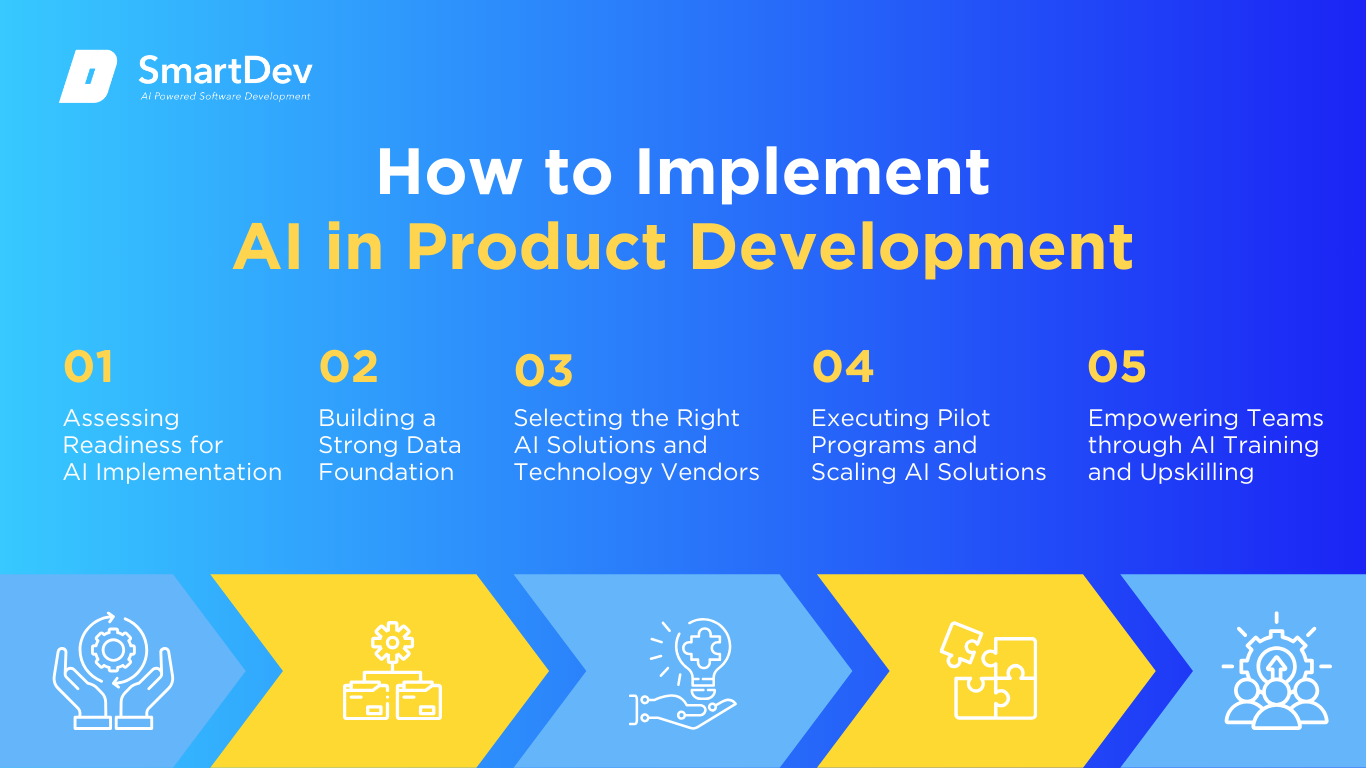
Step 1: Assessing Readiness for AI Adoption
Before implementing AI, it’s essential to assess your organization’s readiness for digital transformation. Begin by identifying key processes that could benefit from automation, such as repetitive tasks or complex data analysis. These areas often represent the best opportunities for AI integration because they offer measurable improvements without overwhelming existing workflows.
Additionally, ensure leadership and key stakeholders are aligned with the AI adoption process. Successful implementation requires organizational buy-in and a clear vision from decision-makers. Without this support, AI solutions may struggle to gain traction, even if they provide clear business value.
Explore our data analytics services to see how we help businesses implement AI solutions that scale.
Step 2: Building a Strong Data Foundation
AI depends heavily on structured, clean, and accessible data to deliver reliable results. Start by ensuring your data is consistently organized, validated, and centralized across departments. This enables AI tools to function efficiently, drawing from high-quality data to produce accurate and actionable insights.
Equally important is establishing a robust data governance framework. This will ensure compliance, security, and seamless data access throughout the organization. A solid data foundation helps build trust in AI systems, ensuring they can scale and drive meaningful improvements across your product development process.
Explore why clean, well-governed data is the foundation of successful AI adoption in our data management guide.
Step 3: Choosing the Right Tools and Vendors
Choosing the right AI tools involves more than just evaluating features, it’s about selecting solutions that align with your specific needs. Look for vendors with expertise in your industry and the ability to offer tailored solutions that integrate smoothly with your existing systems. Make sure the tools you choose can scale as your business grows, providing long-term value.
In addition to functionality, vendor transparency is crucial. Understand how your data will be handled, especially regarding privacy, security, and intellectual property. A reliable vendor will offer clear terms, ongoing support, and regular updates to keep your AI systems up to date with evolving technology.
Step 4: Pilot Testing and Scaling Up
Start with a small-scale pilot to test AI’s impact in a low-risk area of your product development process. Whether automating design iteration or improving data analysis, piloting allows you to refine your approach, identify challenges, and gather insights. Early successes will help build confidence and provide the necessary data to demonstrate AI’s potential to the broader organization.
Once you’ve tested and refined your strategy through the pilot, you can scale up with greater confidence. Analyze performance metrics, gather feedback from your teams, and adjust workflows as necessary. Expanding your AI adoption gradually ensures smoother integration and justifies further investment in the technology.
Step 5: Training Teams for Successful Implementation
To maximize AI’s effectiveness, it’s vital to equip your teams with the skills they need to work alongside AI tools. Offer targeted training on how AI can enhance productivity and support decision-making rather than replace human expertise. This ensures that teams understand how to leverage AI within their workflows, fostering collaboration between technical and creative roles.
Ongoing training and support will also help overcome resistance to change, ensuring smooth adoption. A well-trained workforce ensures consistent, reliable use of AI tools, resulting in improved efficiency, innovation, and productivity across your product development efforts.
To ensure successful AI integration, institutions should start with a clear roadmap. Our guide for tech leads outlines how to assess readiness and align stakeholders from the start.
Measuring the ROI of AI in Product Development
Key Metrics to Track Success
In product development, one of the most critical metrics for measuring AI’s ROI is time-to-market. AI accelerates the design, prototyping, and testing phases by automating repetitive tasks and optimizing workflows, enabling products to reach market faster. This reduction in development time can lead to a significant competitive advantage and improved responsiveness to market demands.
Cost savings also serve as a key indicator of AI’s impact. By automating design processes and improving resource allocation, AI can lower operational costs and reduce inefficiencies. Indirect savings, such as reduced product defects, fewer revisions, and more effective collaboration, also contribute to the overall ROI, making AI a strategic tool for cost optimization.
Case Studies Demonstrating ROI
Eaton Corporation’s integration of generative AI into their product development process serves as a compelling example of AI’s impact on ROI. By leveraging AI to automate design iterations and simulations, Eaton reduced the design time for an automated lighting fixture by 87%, from 16 weeks to just two weeks. This acceleration enabled faster product launches and improved responsiveness to customer demands.
Similarly, Mondelez International utilized AI to enhance its snack development process. The company’s AI tool, developed in collaboration with Fourkind (now part of Thoughtworks), accelerated recipe development by four to five times compared to traditional methods. This efficiency led to the creation of over 70 new products, including the Gluten-Free Golden Oreo, and contributed to a 5.4% increase in quarterly sales.
Common Pitfalls and How to Avoid Them
One common pitfall in measuring AI’s ROI is focusing too heavily on short-term financial gains. While cost savings and faster time-to-market are critical, these metrics often overlook broader benefits like improved product quality, enhanced innovation, and better customer experiences. A holistic approach should evaluate how AI contributes to long-term strategic goals and market positioning.
Another challenge is the lack of baseline data for comparison. Without clear starting points or benchmarks, it can be difficult to assess AI’s impact effectively. To overcome this, businesses should establish baseline metrics early on and continuously track progress against defined objectives, ensuring that AI’s contributions are measurable and aligned with business goals.
Learn how to evaluate AI model effectiveness and ROI with our practical guide on AI performance metrics.
Future Trends of AI in Product Development
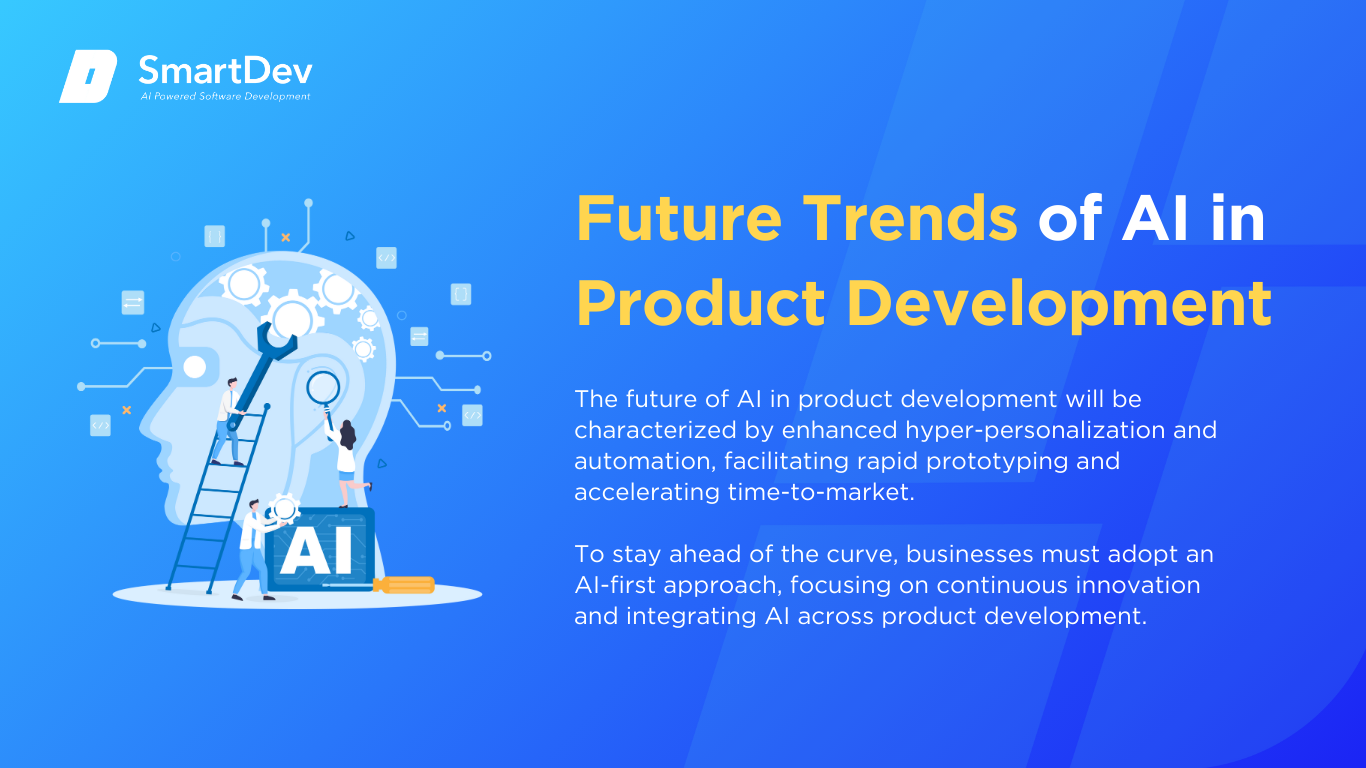
Predictions for the Next Decade
The future of AI in product development will be characterized by enhanced hyper-personalization and automation, facilitating rapid prototyping and accelerating time-to-market. As generative AI advances, it will streamline design processes, fostering improved collaboration across departments with real-time data and insights to inform decision-making.
AI will also play an increasingly significant role in advancing sustainability efforts, optimizing energy consumption, minimizing waste, and supporting the creation of environmentally conscious designs. With deeper integration into product lifecycle management, AI will provide manufacturers with greater oversight and control throughout production, driving operational efficiencies and unlocking new avenues for innovation.
To see which emerging technologies are shaping AI adoption in the next decade, our IT landscape trends recap and guide for business to intergrating AI in 2025 breaks down the must-watch shifts for business leaders.
How Businesses Can Stay Ahead of the Curve
To stay ahead of the curve, businesses must adopt an AI-first approach, focusing on continuous innovation and integrating AI across product development. Investing in the right AI tools, fostering a culture of experimentation, and regularly upskilling teams will ensure agility and effective use of emerging technologies.
Additionally, prioritizing data quality and governance lays a solid foundation for AI success. By staying informed on AI advancements and adjusting strategies as needed, businesses can maintain a competitive edge and maximize AI’s benefits.
Conclusion
Key Takeaways
AI is transforming product development by enhancing efficiency, accelerating time-to-market, and fostering innovation. Key use cases include automating design processes, enabling hyper-personalization, and improving sustainability efforts. Companies that successfully integrate AI can reduce costs, optimize resources, and improve product quality, gaining a significant competitive advantage.
To fully realize the benefits of AI, businesses must assess their readiness, build a strong data foundation, and invest in the right tools. Continuous monitoring and adaptation of AI strategies are essential for sustained success. As AI continues to evolve, it will play an increasingly pivotal role in shaping the future of product development.
Moving Forward: A Strategic Approach to AI-Driven Transformation
As AI continues to revolutionize product development, now is the time to integrate these technologies into your business strategy to drive faster innovation, improve product quality, and enhance efficiency. AI is no longer a luxury; it is a necessity for staying competitive in an increasingly fast-paced market. From automating design processes to enabling data-driven decisions and improving sustainability efforts, AI can help businesses unlock new potential and stay ahead of the curve.
At SmartDev, we specialize in helping organizations harness the power of AI to streamline product development. Whether you’re looking to accelerate time-to-market, optimize design workflows, or leverage AI for better resource management, our team offers tailored solutions to meet your unique needs.
Explore our AI-powered software development services to see how we create custom tools for design automation, predictive modeling, and real-time performance optimization.
Contact us today to learn how we can help you integrate AI into your product development cycle, driving innovation and long-term success for your business.
—
References:
- 50+ Key AI Agent Statistics and Adoption Trends in 2025 | Index.dev
- The Coming AI Tsunami in New Product Development – Are You Ready? | Product Development and Management Association (PDMA)
- How to use generative AI in product design | McKinsey & Company
- How AI Is Revolutionizing New Product Development | Forbes
- Using generative AI to accelerate product innovation | IBM
- 100+ AI Statistics Shaping Business in 2025 | Vena Solutions
- A chemistry company is harnessing AI to develop new beauty products and stay on top of trend cycles | Business Insider
- Oreo Owner Mondelez Taps AI to Tweak Its Classic Snacks | The Wall Street Journal
- Revolutionizing Generative AI Product Design for Innovative Solutions | Neural ConceptConcept
- AI-designed Chips Reach Scale with First 100 Commercial Tape-outs Using Synopsys Technology | PR Newswire
- Research: Quantifying GitHub Copilot’s impact in the enterprise with Accenture | The GitHub Blog
- AI and the R&D revolution | Financial Times


